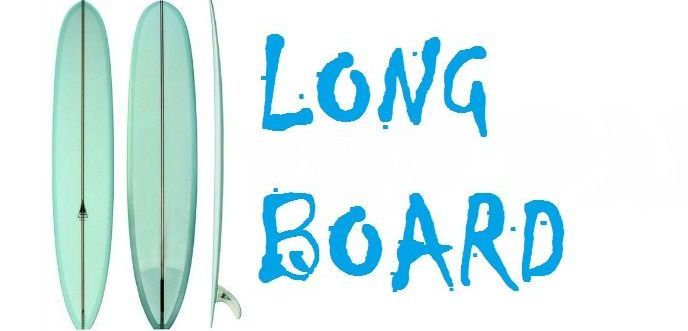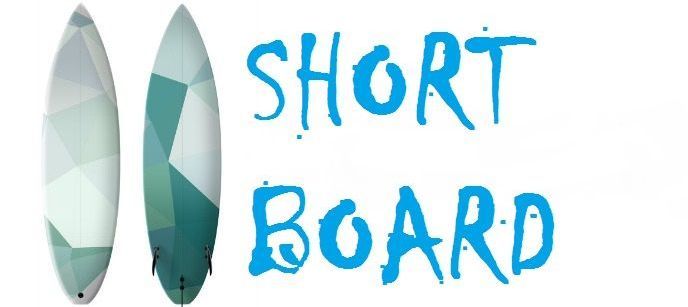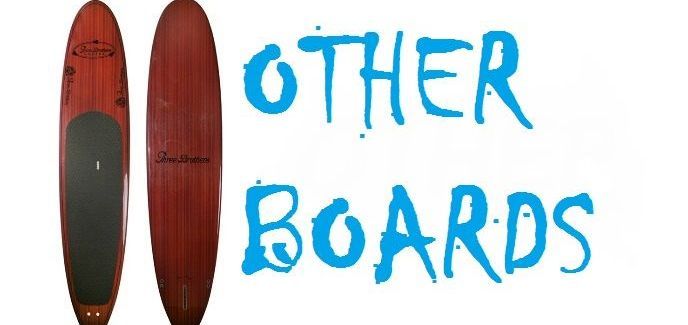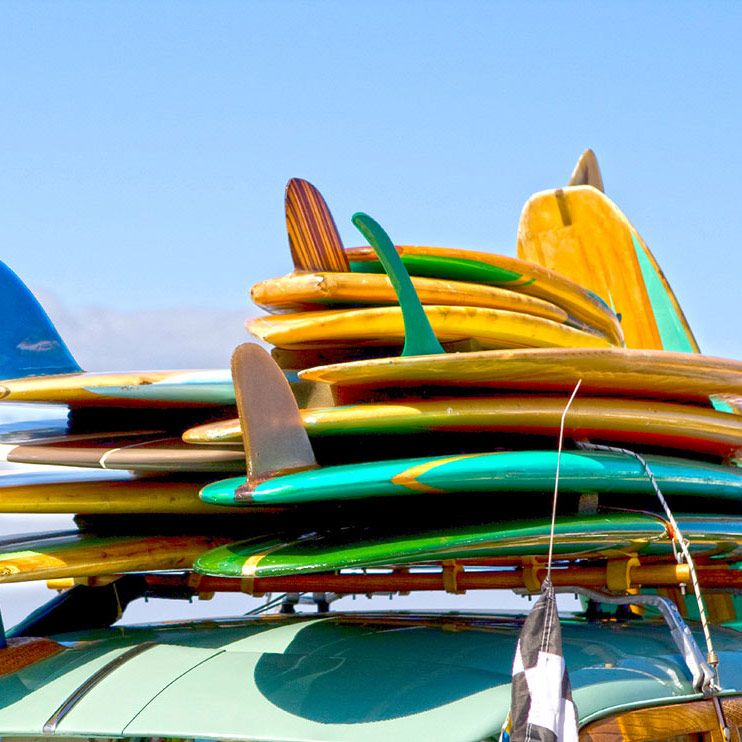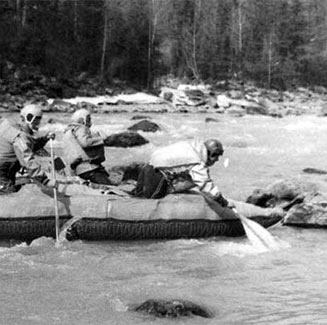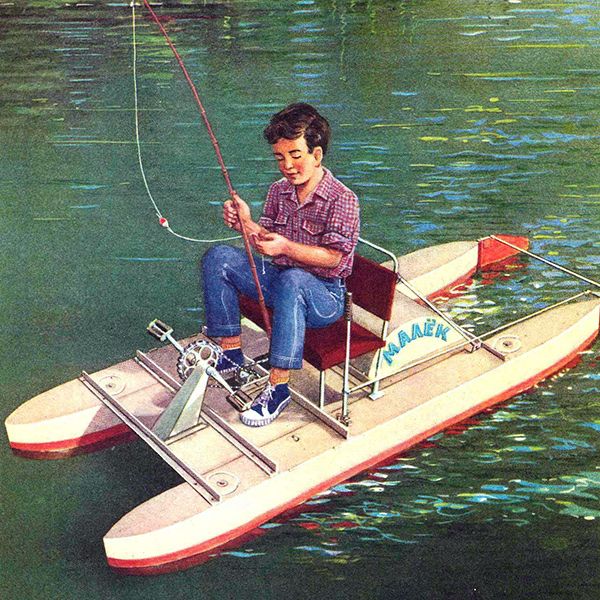 Guide to Surfboards
If surfing begins with curiosity—the desire to conquer the elements, to become one of Them, nearly Poseidons carving through waves—then a surfer always starts with a board.
Guide to Surfboards
If surfing begins with curiosity—the desire to conquer the elements, to become one of Them, nearly Poseidons carving through waves—then a surfer always starts with a board.
“A surfboard is just a board,” think those who have never stood on one (though heaven forbid they share this thought in front of a real surfer ).
Yet, after just one attempt to face the ocean one-on-one, even beginners quickly realize: no two waves are alike , and each wave obeys only a specific type of board.
Let’s explore what kinds of “weapons” are wielded today by big-water enthusiasts.
The variety of surfboards is as vast as the number of surfers themselves—it can be overwhelming. However, certain types stand out as the most popular. They are also the most practical, reliable, and modestly iconic.
Speaking of iconic—it’s the longboard, the great-great-grandfather of modern boards and of surfing itself . For more details about “how the first surfboard came to be,” check out this article . For now, let’s dive into the specifics of longboards.
Construction
 Longboard Construction
A longboard (long board) is an elongated, massive surfboard with a smooth profile.
Longboard Construction
A longboard (long board) is an elongated, massive surfboard with a smooth profile.
In the early 20th century, such boards—measuring 4.9 meters in length and nearly 10 cm in thickness—could weigh up to 70 kg.
In the mid-1930s, the average mass of a longboard dropped to 25-30 kg, and its length to 4.6 meters. Around this time, the renowned Tom Blake added fins (stabilizers) for the first time.
Thanks to these, surfers no longer needed to “steer” with their feet in the water during maneuvers.
Modern longboards only emerged in the early 1970s. Today, the average length is 2.6-2.9 meters (though they can exceed 3.7 meters), and thickness ranges from 5 to 8 cm.
Width dimensions are less critical for longboards, ranging from 50 to 65 cm. Often, the maximum width is closer to the front of the board, though occasionally it is distributed evenly.
The number of fins also varies: one large fin, two small fins alongside one main fin, or a single row of three fins. However, only a professional can truly differentiate among these setups.
Professional longboards are made from fiberglass (fiberglass boards), which are too fragile for beginners.
For newcomers, plastic or soft longboards are recommended.
Why Choose a Longboard?
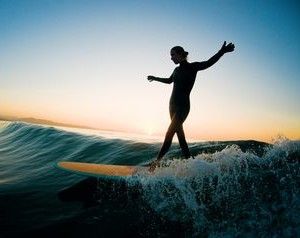 Longboard Surfboard
It has only one downside: a longboard is heavy and unwieldy, making it unsuitable for diving under large waves (such as
Irish waves
) and performing tricks.
Longboard Surfboard
It has only one downside: a longboard is heavy and unwieldy, making it unsuitable for diving under large waves (such as
Irish waves
) and performing tricks.
Still not worried? Great—that’s because the advantages of a longboard are undeniable:
Great for learning. Small waves love big boards. The stability and buoyancy of this surfboard make it easy for beginners to catch small, gentle waves, sit, lie down, paddle, and ride without much effort. Ideal for first steps in surfing—and for much later, of course.
Freedom. A longboard offers the most relaxed surfing style. Advanced surfers can roam from nose to tail, ride on their heads, or even surf in pairs.
More and more waves. Experienced surfers can ride nearly every wave, while for beginners, a longboard can feel like a blessing. It enables riders to move around in circles and catch wave after wave—through cross-stepping and turns—making their way back to the lineup for the next wave.
Many, many days. With a longboard, there’s no such thing as “too little surf.” It gets you riding even on the tiniest and most unremarkable waves, offering about 300 surfing days per year.
A whole art form: riding on the tail of a longboard—nose riding. Have you only used the nose of your board for stickers like “I love ocean”? Well, you can ride it for up to half the length of a wave. Don’t miss the chance to try something new! A longboard is a perfect tool for this.
The evolution of surfboards is most strikingly illustrated by the shortboard: from a 150-kg giant to an ultra-compact masterpiece of dynamic and audacious design.
Nicknamed the “show-off board", the shortboard earned this reputation for good reason: replacing the longboard, it transformed surfing into a more dynamic, flamboyant, and even aggressive sport. It is certainly not suitable for beginners.
Construction
 Shortboard Surfboard
Shortboard Surfboard
Shortboard – a small, lightweight trick board that is every surfer’s dream to conquer. This surfboard is distinguished by its length – only 1.5-2.2 meters.
The width of the shortboard is not crucial and varies from 35-65 cm, reaching its maximum in the center of the board.
The nose is crafted at a sharp angle, while the tail, on the other hand, is softly rounded, often shaped like a “swallowtail.”
A shortboard involves minimal fiberglass, foam, and resin for unmatched maneuverability.
The rocker of the shortboard is especially smooth, and the tail section is almost always equipped with 1, 3, or 7 fins.
Why a Shortboard?
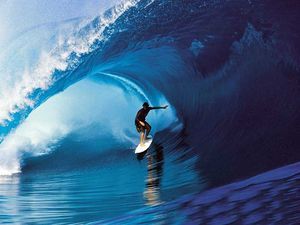 Benefits of a Shortboard
Benefits of a Shortboard
Due to its flat rocker and length, paddling on a shortboard is nearly impossible: learning involves endless splashing around and waiting for the perfect wave. But it’s worth it: see for yourself while
surfing in Portugal
.
Defies the elements. The shortboard is perfect for fast, sharp, barreling waves. One of the most spectacular tricks is riding through the “tube” under the watery canopy.
Master of all sections. Thanks to its maneuverability and speed, a shortboard lets you carve on the shoulder, tail, or inside the barrel of the wave. A shortboard surfer has ample time to return to the closing section and build up speed for the next maneuver.
Incredible tricks. Everything you’ve seen on TV can be done on a shortboard: launching into the air, carving deep into the water with powerful rail turns, snapping vertical sections with precision, leaving intricate trails behind, ducking through waves, and creating massive spray walls. A paradise for professionals.
Compact size. While a longboard might look more commanding, a shortboard is far lighter. No need to wear yourself out figuring out how to store or transport the board.
The name speaks for itself: funboard – a board for fun and easygoing rides. The advantages of a funboard, like the fun itself, are undeniable.
Construction
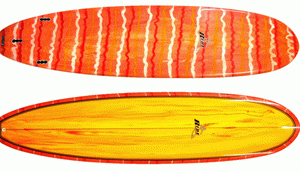 Funboard Construction
Funboard Construction
Funboard – a fairly long and thick board that nonetheless remains maneuverable for effortless surfing.
The length of a funboard ranges from 1.8 to 2.6 meters.
This surfboard boasts variety in shape and size: from elongated mini versions of longboards with a single fin to shorter, sharp-nosed boards with 3 fins, similar to a shortboard but thicker and wider.
The coating of funboards, as well as their fins, is notable for its rigidity.
Why a Funboard?
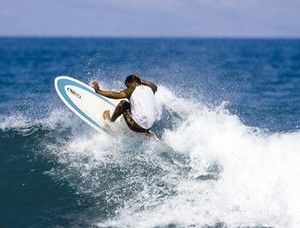 Benefits of a Funboard
Benefits of a Funboard
This board is best suited for beginners in surfing, but its variability allows everyone to find “their” surfboard in it.
Suitable for everyone. A minimalibu is convenient for learning: it’s considered a transitional board from a longboard to a shortboard.
As is often the case, a former beginner outgrows the longboard but feels out of place on a shortboard.
Simply put, a funboard is the perfect option for intermediate surfers.
Experienced riders won’t overlook a funboard either if they prioritize effortless and stylish rides over complex tricks.
Wave-friendly. A funboard allows you to quickly feel the wave, even in minimal conditions. It performs best on medium waves – not too sharp but not entirely flat. However, its ease of handling is noticeable at the start of every wave.
You can recognize it instantly – the goldfish of the surfing world. Fishboard is the third most popular board after shortboards and longboards and “the most designer-oriented,” boasting nearly 200 variations.
Construction
 Fishboard Construction
Fishboard Construction
Fishboard – a modified shortboard, short with a pointed or rounded nose and a distinctive tail, designed for non-professionals.
In other words, if your skills aren’t sharp yet, and water tricks are a distant dream, it’s most sensible to entrust your ambitions to the fishboard.
The “fish” is even shorter than the shortboard – 1.5-1.8 meters, but with a width of 50-65 cm, making it look bulkier than its “ancestor.”
The maximum width is typically at the center or closer to the nose of the board.
The rocker of a fishboard is smooth and flat, lacking significant curves. The tail can be equipped with 2-5 fins.
A fishboard’s tail comes in three basic types:
“Swallowtail” – a wide, split tail with a deep cut. It enhances speed on small waves, facilitates paddling, and simplifies returning to the starting position. One of the best choices for beginner fishboarders.
“Baby Swallowtail” – a tail similar in design to the classic type but 1.5-2 times smaller. Ideal for maneuvers on large and medium-sized waves, such as those found in Cornwall County .
“Bat Tail” – a showcase of avant-garde surfboard fashion. This tail is convex rather than concave, making the board stable on various waves. Properly outfitted with fins, a battail enables you to perform any tricks on the water.
The tail cut into the board’s body can vary from 0.7 to 15 cm, primarily dictated by design. The “Bat” board has no cutout at all, as its outline is convex.
Why a Fishboard?
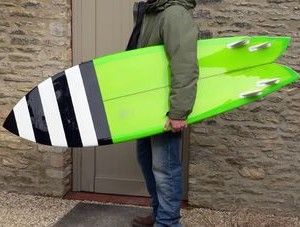 Fishboard for surfing
Fishboard for surfing
A fishboard isn’t for every beginner, nor can you control it while lying down. But so what? The fishboard has plenty of advantages.
The fishboard, or “plush” as surfers call it, combines the “professionalism” of shortboards with the forgiving nature of longboards.
This board is the perfect transition from longboards to shortboards. Beginner fishboarders use it to practice maneuvers, improve their skills, and later perform tricks with confidence as experienced surfers.
The fishboard is suitable for small, choppy waves, even in challenging conditions. It makes paddling easier and maintains speed on flat sections when the wave weakens.
Fishboards are designed for the majority of tricks. They are particularly adept at sharp turns and rotations on the board. Every passionate surfer likely has a couple of these “fishes” in their arsenal.
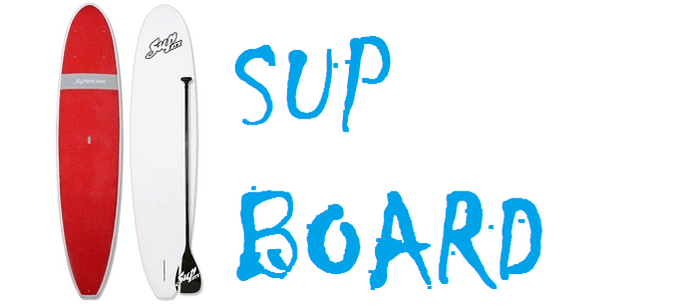 Paddleboard
Paddleboard
A surfer with a paddle is essentially a paddleboarder. The paddleboard brings together surfing and paddling into one activity.
Construction
 SUP board construction
SUP board construction
The SUP board (Stand Up Paddle) typically has an average length of 3-3.3 meters, width of 70-80 cm, and thickness comparable to a longboard.
SUP boards come in two main types:
Solid (conventional construction using fiberglass, epoxy, wood, and carbon material).
Inflatable (inflatable boards that rival traditional ones in quality).
SUP boards are divided into numerous types, but they can be broadly categorized into three groups:
For riding ocean waves: Their characteristics are similar to regular surfboards.
For competitive racing: Extended boards (up to 5 meters) with V-shaped hulls designed for speed.
For specialty locations: SUP boards designed for lake cruising, river rapids, or even yoga. These designs can be quite imaginative.
On a SUP board, you can meditate, fish, or simply sunbathe. These boards are also used by photographers, lifeguards, and sports instructors.
Why a Paddleboard?
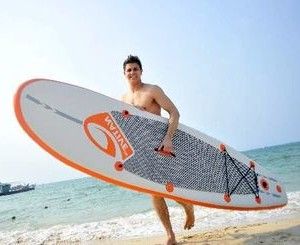 SUP board for surfing
SUP board for surfing
Not every surfer considers SUP boarding to be true surfing. But who cares when this type of riding offers so many benefits?
Anywhere, anytime, be it in Aquitaine . There’s no need to hunt for the perfect spot, wait for waves, or check wind conditions like in Algarve . A paddleboard works on any body of water.
Accessible for everyone. Even a child can master SUP boarding within a few days of intensive practice. No specialized training is necessary.
No “lineup jams”. Surfing in the ocean often means waiting hours for your turn in the lineup, and navigating around aggressive surfers. With SUP, you avoid all of that.
Versatility. A paddleboard can be adapted for different uses: add a sail (for windsurfing), a kite (for kitesurfing), or extra foot straps and mounts (for towing behind a boat).
Let’s talk about other surfboard modifications .
Wind (wind) – These boards feature wing-like protrusions near the tail edge for performing tricks.
Gun (big-wave gun) – A true “weapon” for tackling massive waves (2-3 times your height or more). These boards are long, wide, thick, and have pointed noses and tails, facilitating easy acceleration on steep waves while staying maneuverable. Guns typically feature 3-4 fins and are handled by fearless surfers.
Hybrid – Combines features of different types of boards. For example, a mix between a shortboard and a fishboard: the hybrid offers the maneuverability of a shortboard with the stability afforded by extra width.
Soft-top – Likely to be your first board. These “soft” boards with rubberized covers are ideal for beginners. They can be modified longboards or shortboards.
Tow-in – A small (1.2-1.5 meters) board with foot strap mounts. These are towed to the lineup by a boat or jet ski and used like a shortboard but allow for performing a greater variety of tricks.
Nowadays, surfboards come in so many varieties that everyone is bound to find their perfect fit—a board that “speaks their language.”
And while a wetsuit (your second skin) must be chosen carefully, selecting your surfboard—your “second legs and arms”—requires even more attention. Get equipped with more information on this topic .
Video
Watch a video featuring a surfer on a longboard:
